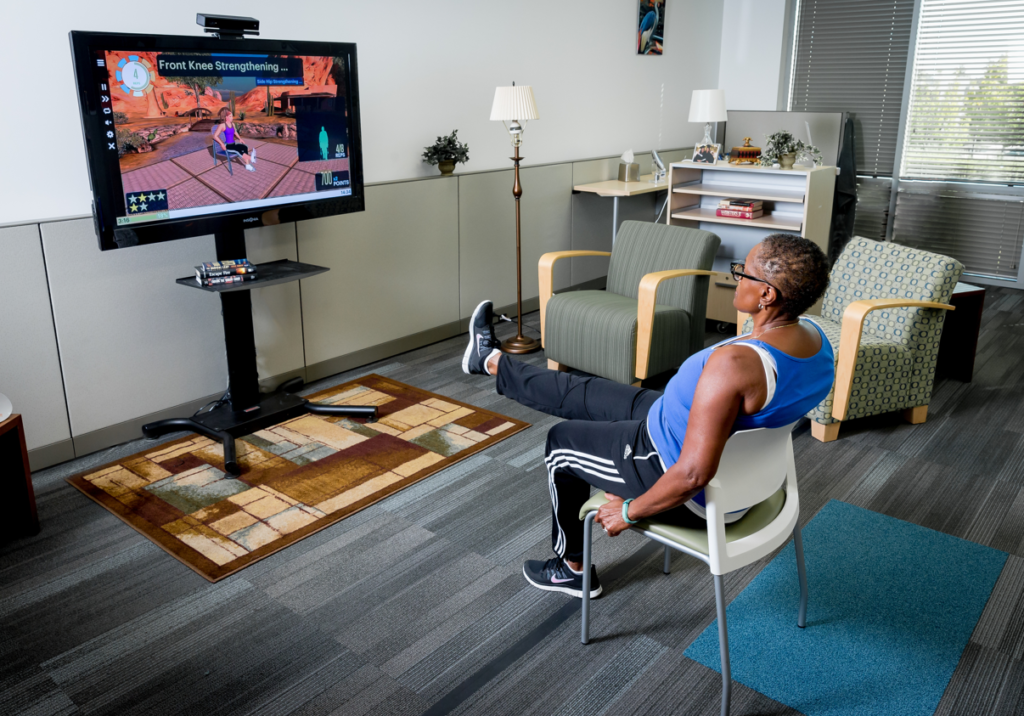Aging populations around the globe have motivated companies small and large to focus more on senior care technology. Multinational tech giant Philips (NYSE: PHG) has been among these companies, and its new initiative places even more emphasis on helping aging people maintain their independence at home, whether that’s a private residence or senior living community.
Philips’ Aging Well Services is meant to be a whole portfolio of personalized services, solutions, and content around this mission of independence. It launched last month, with tele-rehabilitation company RespondWell as the first participant. RespondWell uses a gamification approach to help enable and improve home-based rehab.
The Aging Well ecosystem also currently includes BrainHQ, a cognitive health platform offering brain-training exercises, as well as medication management options and senior living/home health referral partnerships, Marcia Conrad Miller, senior director of business transformation at Philips, told Senior Housing News. The team at Philips is actively involved in discussions to expand the Aging Well portfolio, she added.
As for why Aging Well is launching now, it is related to the recent division of Philips into two separate holding companies, one for lighting and one that merged consumer products and health care products into a health tech category. Aging Well is an important part of Philips’ effort to provide support at every point in the health care continuum, at every stage of a person’s life, Conrad Miller said.
The approach is to consider the needs of both caregivers and seniors, and to have an effective way of connecting both to Philips solutions and partners, according to Conrad Miller. On trend that she already has picked up on is that the lines are blurring somewhat in terms of the traditional boundaries in the continuum of care, she said.
“What I’m seeing in those [senior housing and care] spaces is that those providers are becoming broader across the whole spectrum,” she said. “Maybe it’s an independent living or assisted living provider, or maybe a CCRC [continuing care retirement community], but many already are expanding into home- and community-based services, really broadening the populations they’re trying to serve.”
Given this expansion, Philips also sees the Aging Well initiative as a way to help integrate these different care settings—for instance, the company already has announced an open architecture platform to bring together information from different parts of the aging services ecosystem, in order to analyze it and predict potential events. This could lead to more targeted interventions, Conrad Miller said.
In terms of the referral partnerships that Philips forges in the home care space, the company looks at a few factors, according to Conrad Miller. One is the geographic reach of the home care provider, keeping in mind that Philips is a nationwide presence, she said—although, naturally, the quality of the organization and the needs of the patient also factor highly. Playing a role in referrals makes sense for Philips because its customers who use products such as the Lifeline alert system often have a subsequent need for home care, Conrad Miller explained.
Another big senior care challenge that Philips has in its sights: providing more services to people in lower socioeconomic rungs. Aging Well could play an important role in identifying those technologies and solutions that are most beneficial to people’s health and the overall cost structure, according to Conrad Miller. Armed with this information, public payors such as Medicare and Medicaid might be able to broaden their coverage or otherwise revise the payment processes around senior care.
Of course, the Aging Well initiative also is a business strategy for Philips, and one that is supported by the impending wave of seniors—and those who will be caring for them. The dollars at stake are substantial, Conrad Miller emphasized. One example of the numbers that Philips is looking at: There are more than 34 million people in the family caregiver category in the United States today, spending $55 million annually related to caregiving.
Written by Tim Mullaney




